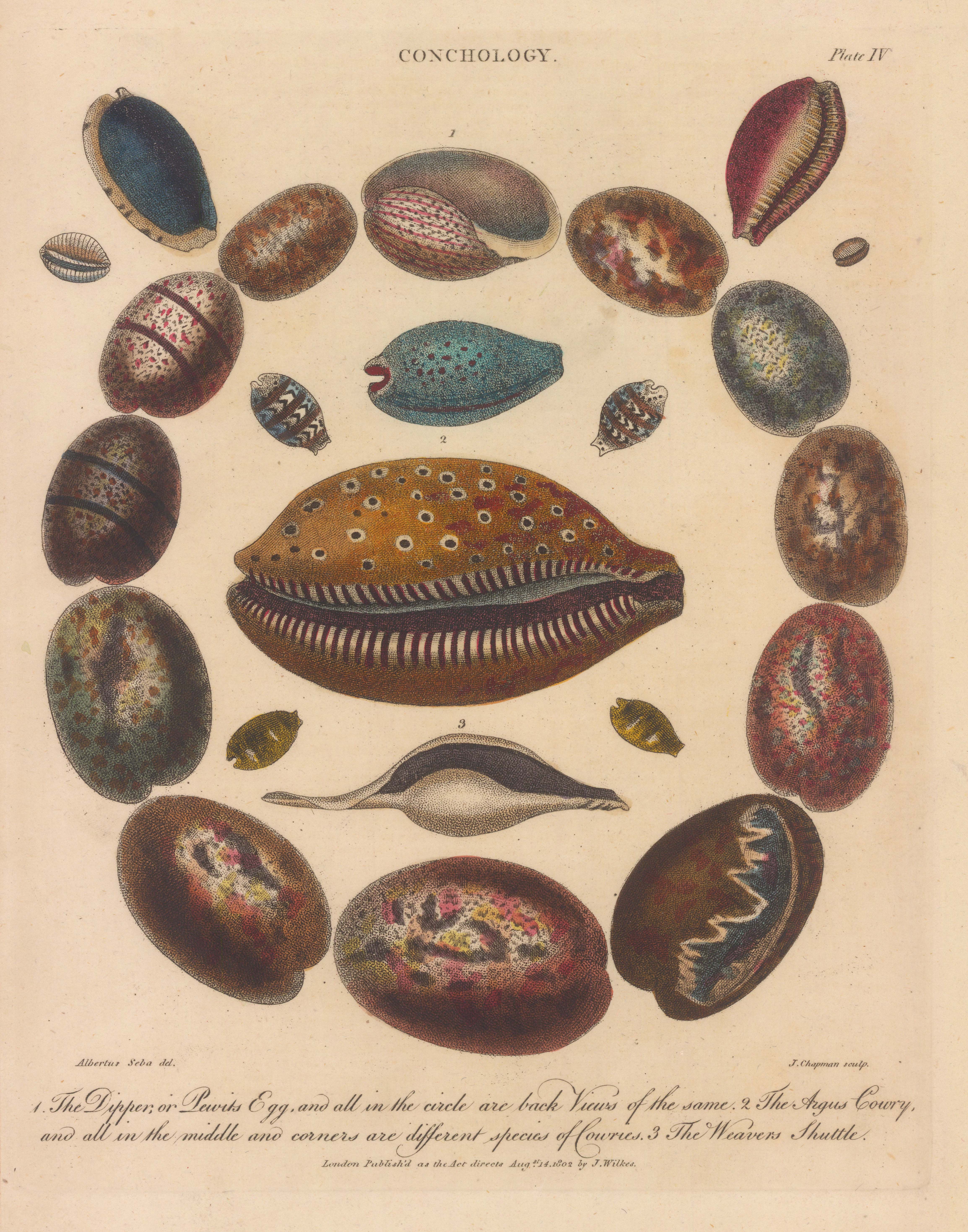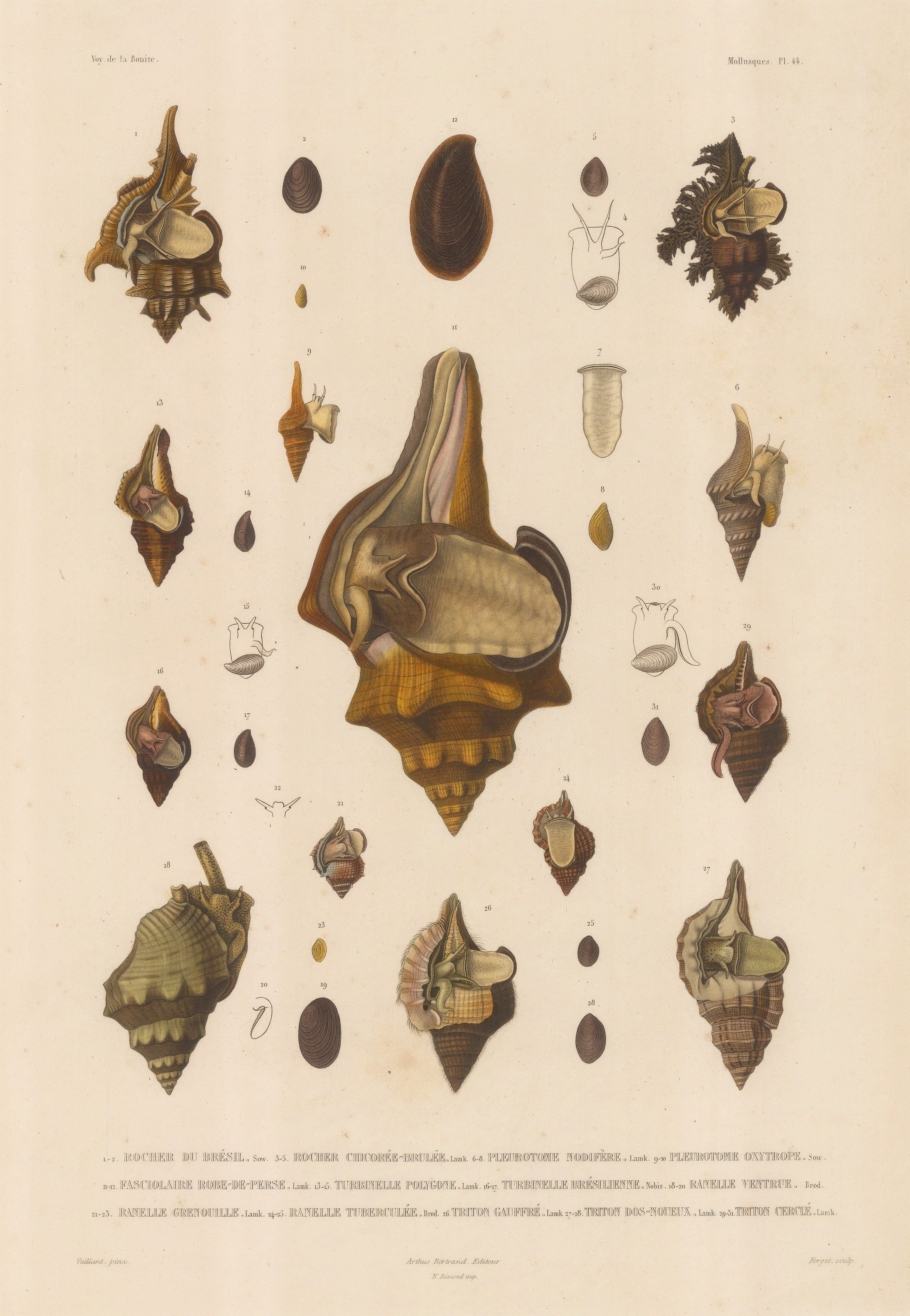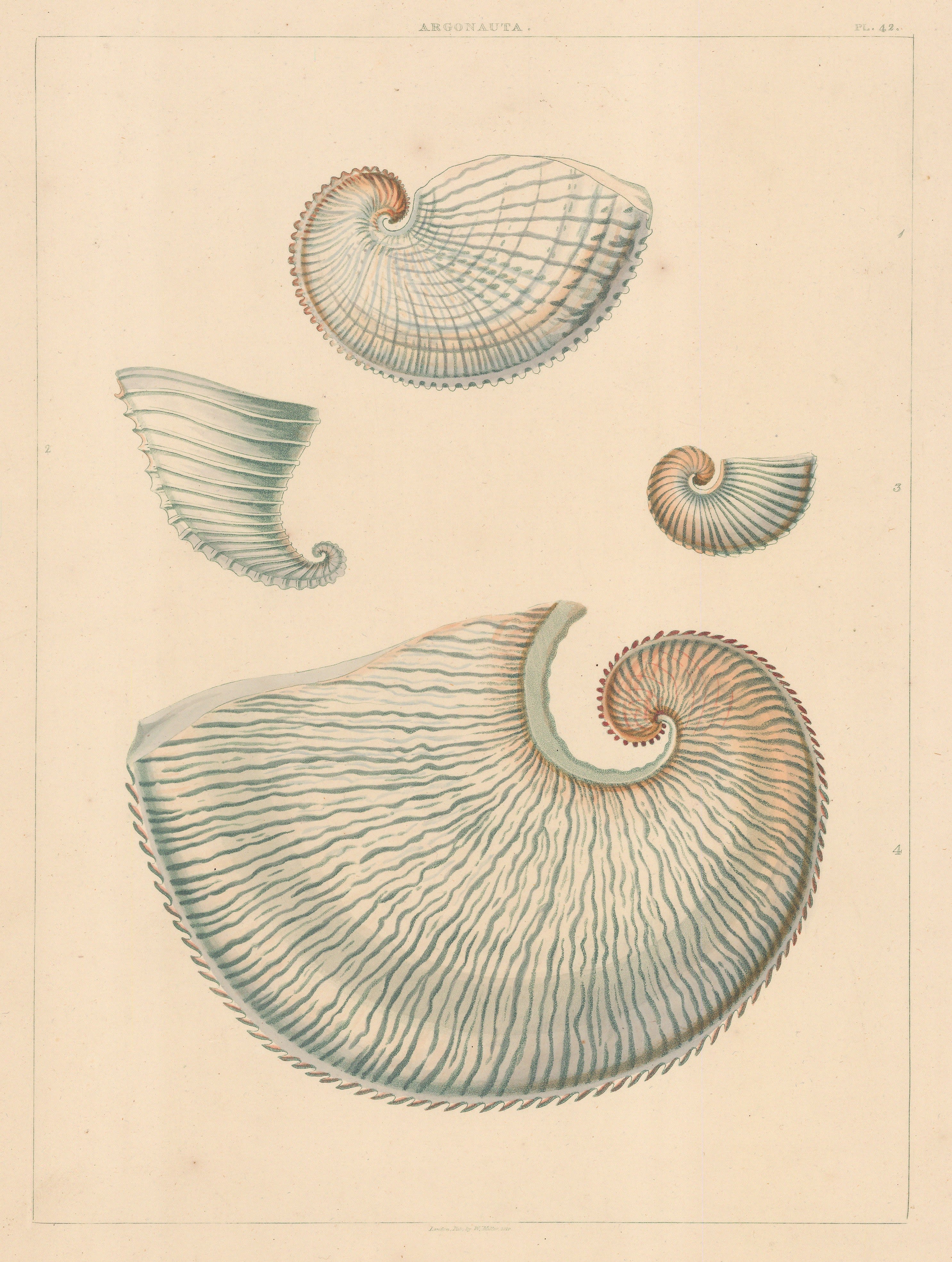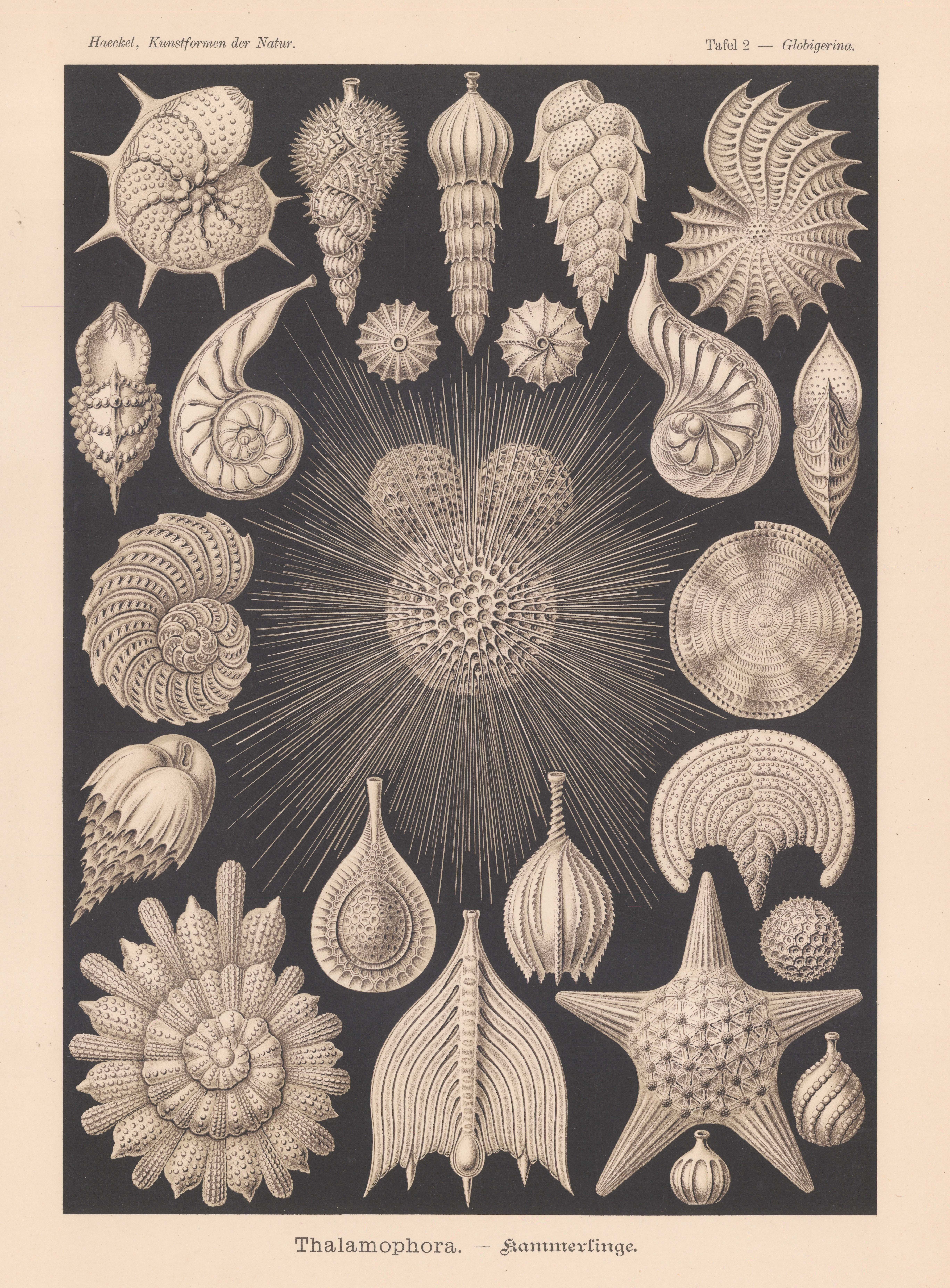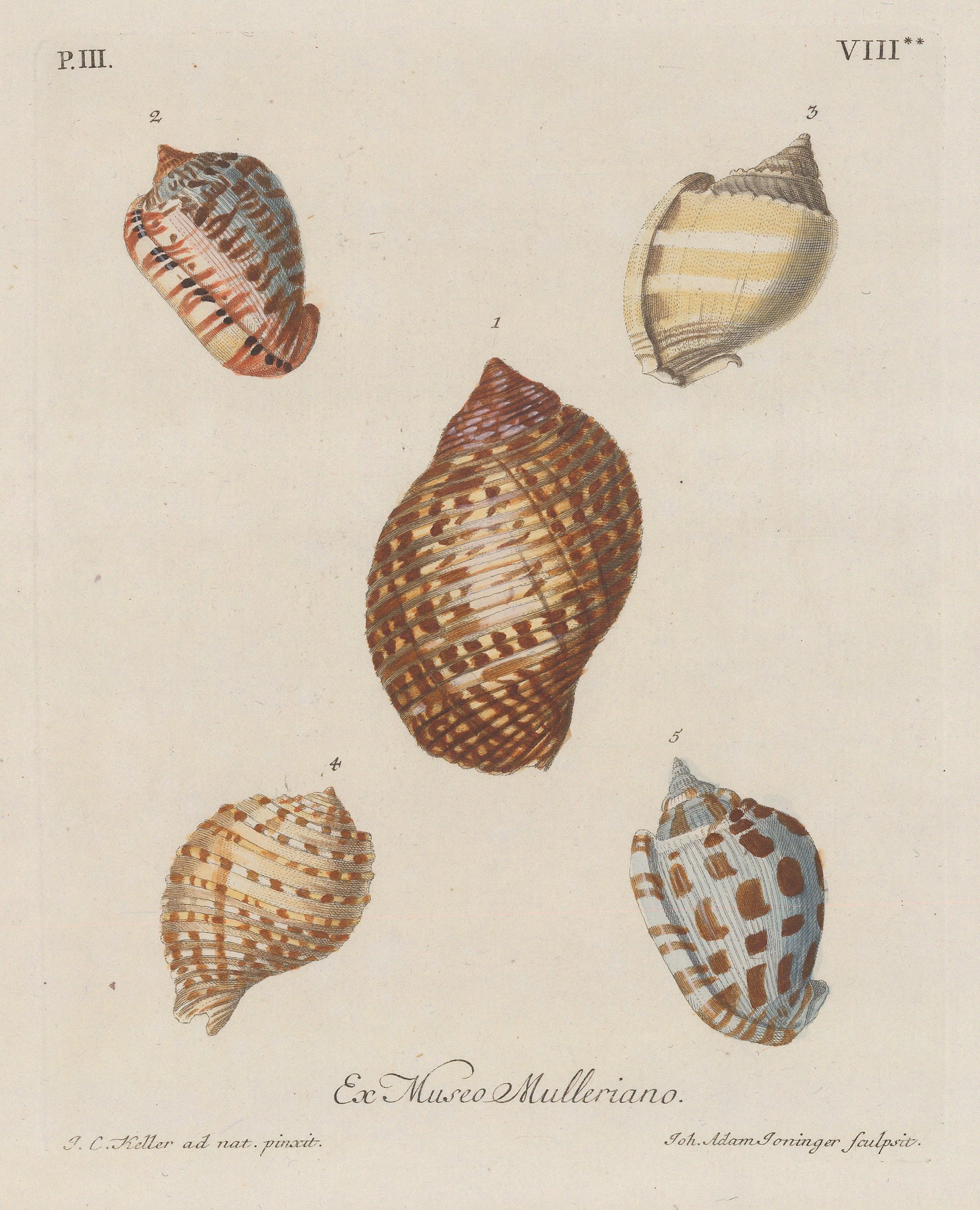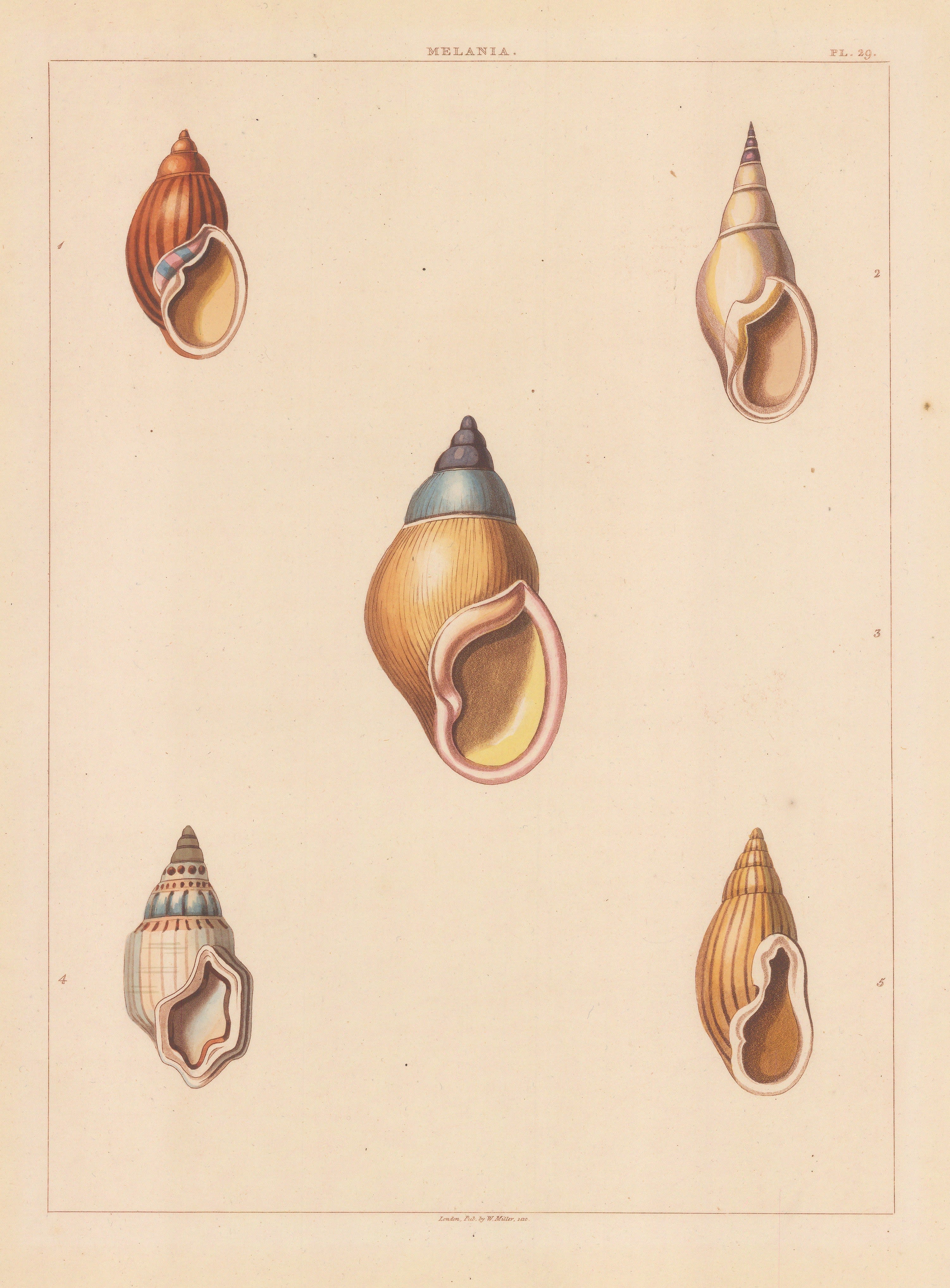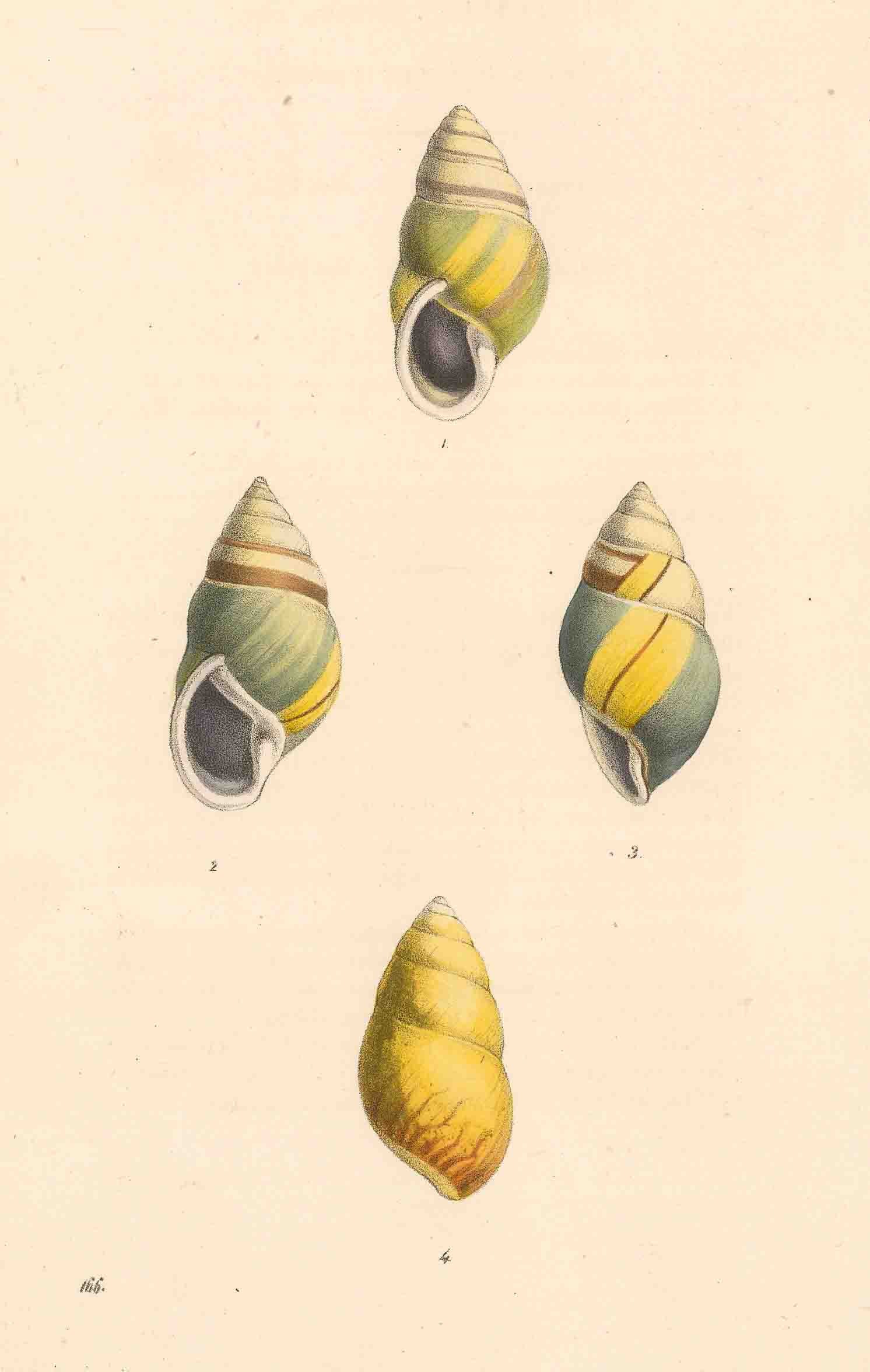
In the 17th century a veritable madness for collecting shells took hold of Europe...
John WIlkes. An original hand coloured antique copper-engraving of Bullae (Pewit’s Egg or Dipper). 12 Dippers, Argus Cowry with 9 Cowries and a Weaver Shuttle. After Albertus Seba, engraved by John Pass. 1810 [NATHISp7825]
Driven by the increase in exploration and commerce, particularly of the Dutch East India Company, shells were traded privately by sailors and company administrators with dealers waiting at the docks to vie for the newest specimens. Extraordinary finds from the sea floor were in great demand for the collecting cabinets of wealthy aristocrats and serious naturalists, and Conchylomania soon became a rival to Tulipmania, the one expressing the immutable the other the ephemeral.
Auguste-Nicolas Vaillant. An original hand coloured antique lithograph of Buccin Fusiforme, Pyrule Trompette, Pyrule Chauve Souris and La Meme: Twelve examples after Vaillant. c.1850 [NATHISp6491]
Although the hysteria for tulips had a spectacular crash in the mid 17th century the interest in shells only grew in response to the insatiable appetite for the new, the exotic and the status of possessing that which no one else had.
Charles d’Orbigny. An original hand coloured antique lithograph of Strombus - seven varieties of conch and mollusk shells with key, 1849. [NATHISp7771]
George Perry. An original hand coloured antique aquatint of Univalves - four varieties Genus Argonauta: 1. Argonauta Vitrea, 2. A. Rotunda, 3. A. Striata, 4. A. Grandiformis. 1810. [NATHISp6040]
Shells became an essential design element in the Baroque period, particularly the later Rococo, and dominated all areas of the decorative arts until the end of the 18th century. The mania reached its peak at the 1796 auction of the collection of the Dutch naturalist Pierre Lyonet whose prized Nautile Vitré, Carinaria cristata, one of only two known examples, sold for 299 fl. (Dutch guilders) famously exceeding the amount realised for Johann Vermeer’s now priceless Women in Blue Reading a Letter, which Lyonet’s estate had sold five years earlier for 43 guilders.
Ernest Haeckel. An original antique lithograph of Foraminifera (Thalamophora). 20 specimens of the shells of mollusc like organisms . 1904. [NATHISp7966]
Throughout the 19th century shell collecting continued to be popular with the upper classes, and expanded to the aspirational middle classes but never quite reached the heady days of the 18th century.
George Wolfgang Knorr. An original hand coloured antique copper-engraving of five mollusc shells from the collection of Philipp Ludwig Muller, professor of Natural History. 1770. [NATHISp7311]
For the most part collectors, even those with a scientific interest, had little regard for the inhabitants of shells; malacology the study of molluscs as opposed to conchology the study of their shells only came into being at the start of the 19th century. Principally made up of Calcium carbonate, the main component of seawater, molluscs began developing their outer casings some 500 million years ago evolving a fantastic range of shapes to thwart predators in addition to providing shelter.
George Perry. An original colour antique aquatint of Univalves: Genus Melania: 1. Melania Aurantia, 2. M. Acuta, 3. M. Carnatis, 4. M. Nonpareil, 5. M. Striata. 1810. [NATHISp6486]
During a particular boom in mollusc shell building the subsequent depletion of calcium is believed to be responsible for rendering the earth’s atmosphere more conducive to the evolution of humans.
William Swainson. An original hand coloured antique steel-engraving of Bullimuis citrinus shells. 1833. [NATHISp7249]
Today more than 100,000 known type of shells have been identified, and as the habitats of molluscs have become more accessible and the shells seemingly less rare even the once most expensive examples like the Conus goriamaris, the glory of the seas, are now available at auction for a few thousand pounds. However one can anticipate that in time the competition of collectors and exploitation of habitat will increase scarcity until once again shells command a king’s ransom.
About the author
The Map House

